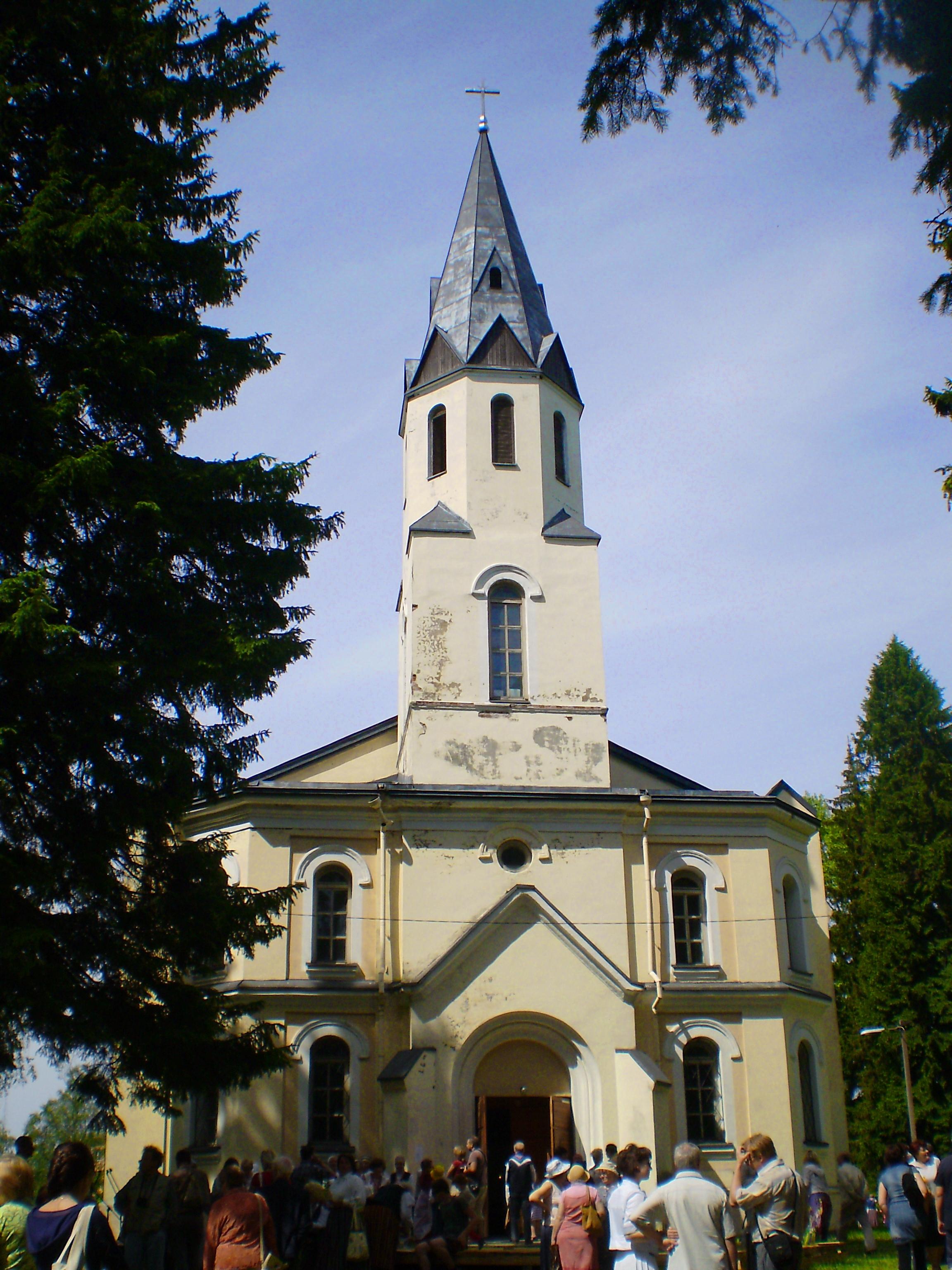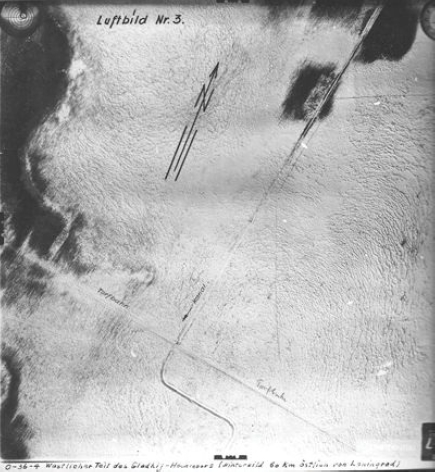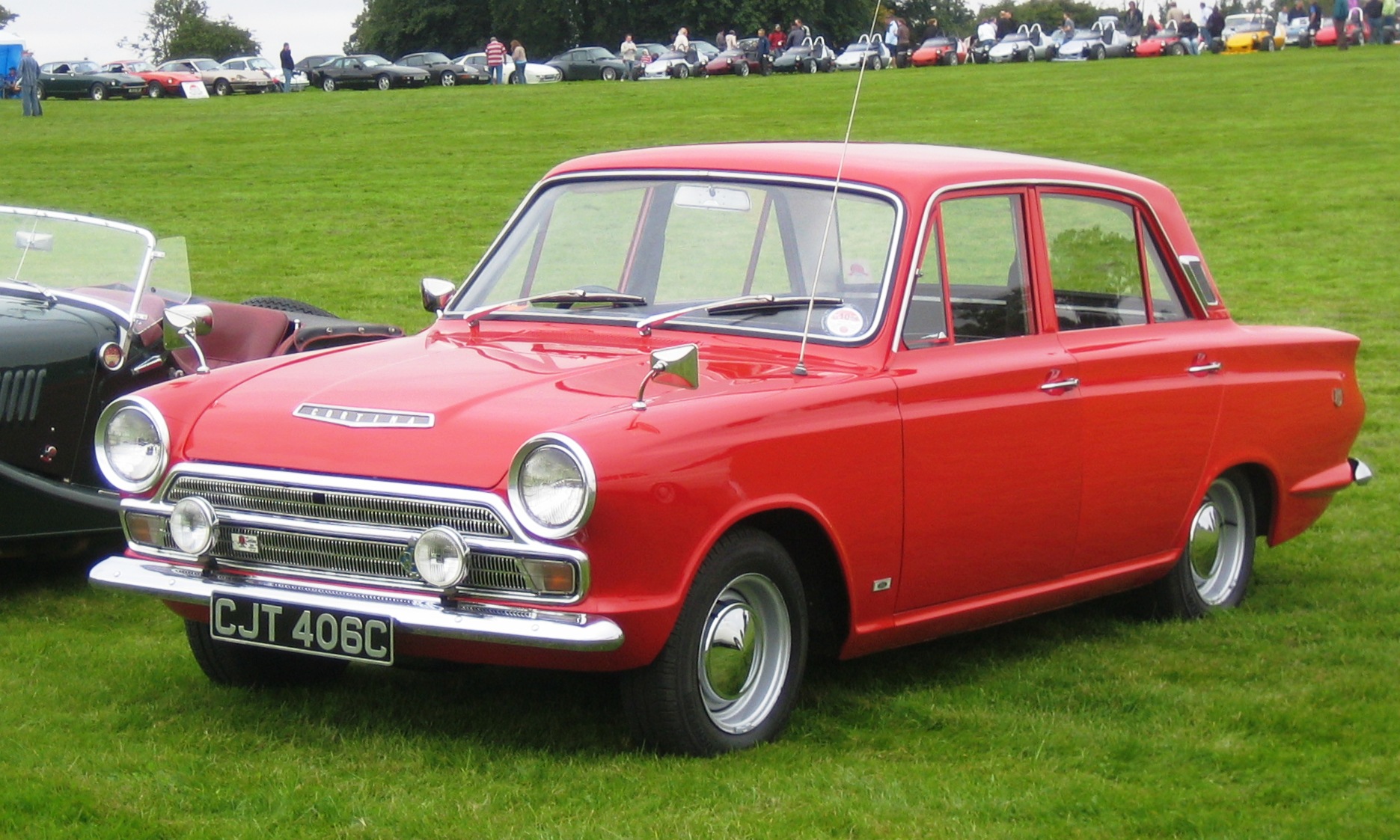|
Vsevolozhsk
Vsevolozhsk ( rus, Все́воложск, p=ˈfsʲevələʂsk; fi, Seuloskoi) is a types of inhabited localities in Russia, town and the administrative center of Vsevolozhsky District in Leningrad Oblast, Russia, located on the Karelian Isthmus east of Saint Petersburg, St. Petersburg. Population: The town's name comes from manufacturer Vsevolozhsky. In 1941–1944, the vital road connecting Siege of Leningrad, besieged Leningrad with the rest of Soviet Union, the Road of Life, passed through the town. Currently, a considerable part of the population of Vsevolozhsk commutes to St. Petersburg for work, which is facilitated by the wide-scale construction of apartment buildings in the town. History A number of villages historically existed within the current area of the town of Vsevolozhsk. In particular, the village of Ryabovo was first mentioned in 1727. From the end of the 18th century and into the 19th century, Ryabovo belonged to the family of Vsevolozhsky (family ... [...More Info...] [...Related Items...] OR: [Wikipedia] [Google] [Baidu] |
Vsevolozhsky District
Vsevolozhsky District (russian: Все́воложский райо́н) is an administrativeOblast Law #32-oz and municipalLaw #17-oz district (raion), one of the seventeen in Leningrad Oblast, Russia. It is located in the central northwestern part of the oblast on the Karelian Isthmus and borders with Priozersky District in the north, Kirovsky District in the south, Vyborgsky District in the northwest, Nevsky, Krasnogvardeysky, Kalininsky, Vyborgsky, and Kurortny Districts of the federal city of St. Petersburg in the west, and is washed by Lake Ladoga in the east. The area of the district is .Official website of Vsevolozhsky DistrictTerritorial Planning of Vsevolozhsky Municipal District of Leningrad Oblast p. 65 Its administrative center is the town of Vsevolozhsk. Population (excluding the administrative center): 131,233 ( 2002 Census); Geography The Okhta River flows through the district while the Neva defines its southeastern border. There are many lakes ... [...More Info...] [...Related Items...] OR: [Wikipedia] [Google] [Baidu] |
Karelian Isthmus
The Karelian Isthmus (russian: Карельский перешеек, Karelsky peresheyek; fi, Karjalankannas; sv, Karelska näset) is the approximately stretch of land, situated between the Gulf of Finland and Lake Ladoga in northwestern Russia, to the north of the River Neva. Its northwestern boundary is a line from the Bay of Vyborg to the westernmost point of Lake Ladoga, Pekonlahti. If the Karelian Isthmus is defined as the entire territory of present-day Saint Petersburg and Leningrad Oblast to the north of the Neva and also a tiny part of the Republic of Karelia, the area of the isthmus is about . The smaller part of the isthmus to the southeast of the old Russia-Finland border is considered historically as Northern Ingria, rather than part of the Karelian Isthmus itself. The rest of the isthmus was historically a part of Finnish Karelia. This was conquered by the Russian Empire during the Great Northern War in 1712 and included within the autonomous Grand Duchy of ... [...More Info...] [...Related Items...] OR: [Wikipedia] [Google] [Baidu] |
Vsevolozhsky (family)
Vsevolozhsky (masculine), Vsevolozhskaya (feminine), or Vsevolozhskoye (neuter) may refer to: * Vsevolozhsky family, a noble family of Rurikid stock *Ivan Vsevolozhsky (1835–1909), director of the Imperial Theaters in Russia in 1881–1898 *Vsevolozhsky District, a district of Leningrad Oblast, Russia *Vsevolozhskoye Urban Settlement, a municipal formation corresponding to Vsevolozhskoye Settlement Municipal Formation, an administrative division of Vsevolozhsky District of Leningrad Oblast, Russia *Vsevolozhskoye, a suburban settlement, which was merged with four other suburban settlements into the urban-type settlement of Vsevolozhsky, later the town of Vsevolozhsk, Leningrad Oblast, Russia. * Vsevolozhskaya railway station, main railway station in Vsevolozhsk Vsevolozhsk ( rus, Все́воложск, p=ˈfsʲevələʂsk; fi, Seuloskoi) is a town and the administrative center of Vsevolozhsky District in Leningrad Oblast, Russia, located on the Karelian Isthmus east of St.&n ... [...More Info...] [...Related Items...] OR: [Wikipedia] [Google] [Baidu] |
Vsevolozhskaya Railway Platform
Vsevolozhsky (masculine), Vsevolozhskaya (feminine), or Vsevolozhskoye (neuter) may refer to: * Vsevolozhsky family, a noble family of Rurikid stock *Ivan Vsevolozhsky (1835–1909), director of the Imperial Theaters in Russia in 1881–1898 *Vsevolozhsky District, a district of Leningrad Oblast, Russia *Vsevolozhskoye Urban Settlement, a municipal formation corresponding to Vsevolozhskoye Settlement Municipal Formation, an administrative division of Vsevolozhsky District of Leningrad Oblast, Russia *Vsevolozhskoye, a suburban settlement, which was merged with four other suburban settlements into the urban-type settlement of Vsevolozhsky, later the town of Vsevolozhsk, Leningrad Oblast, Russia. * Vsevolozhskaya railway station, main railway station in Vsevolozhsk Vsevolozhsk ( rus, Все́воложск, p=ˈfsʲevələʂsk; fi, Seuloskoi) is a town and the administrative center of Vsevolozhsky District in Leningrad Oblast, Russia, located on the Karelian Isthmus east of St.&n ... [...More Info...] [...Related Items...] OR: [Wikipedia] [Google] [Baidu] |
Nokian Tyres
Nokian Tyres plc ( fi, Nokian Renkaat Oyj), headquartered in Nokia, Finland, produces tyres for cars, trucks, buses, and heavy-duty equipment. Known for its winter tyres, Nokian is the only tyre manufacturer in the world with its own permanent winter tyre testing facility. The company's Hakkapeliitta brand name is recognised in Finland as a reputable trademark. Nokian Tyres concentrates on the consumer car and vehicle tyre replacement and premium snow tyre markets; they do not supply automobile manufacturers tyres for new car production. The greater prices consistently found in those markets result in higher profitability compared to the rest of the tyre industry. The company also produces retreading materials and tyre pressure monitors. It also previously manufactured bicycle tyres but currently licenses the Nokian name on bicycle tyres to another Finnish company. The Vianor retail tyre store chain, which services cars in addition to selling tyres, is owned by Nokian Tyres P ... [...More Info...] [...Related Items...] OR: [Wikipedia] [Google] [Baidu] |
Road Of Life
The Road of Life () was the set of ice road transport routes across Lake Ladoga to Leningrad during the Second World War. They were the only Soviet winter surface routes into the city while it was besieged by the German Army Group North under ''Feldmarschall'' Wilhelm Ritter von Leeb. The routes operated in the winters of 1941-1942 and 1942-1943. Construction and operation were performed under German artillery and aerial bombardment. In January 1943 the Soviet's Operation Iskra broke the encirclement, and the ice roads were used in conjunction with land routes for the remainder of the winter. The routes carried supplies necessary to sustain life and resistance inside the Leningrad pocket, and evacuated non-combatants, wounded, and industrial equipment. Over 1.3 million people, primarily women and children, were evacuated over the roads during the siege . The Road of Life is now a World Heritage Site. History The blockade forms On 8 September 1941, Army Group North captured ... [...More Info...] [...Related Items...] OR: [Wikipedia] [Google] [Baidu] |
Ford Of Europe
Ford of Europe GmbH is a subsidiary company of Ford Motor Company founded in 1967 in Cork (city), Cork, Republic of Ireland, Ireland, with headquarters in Cologne, Germany. History Ford of Europe was founded in 1967 by the merger of Ford of Britain, Ford Germany, and Irish Henry Ford & Son Ltd divisions of the Ford Motor Company. The front-engined Ford Transit range of panel vans launched in 1965, was the first formal co-operation between the two entities, simultaneously developed to replace the Ford Transit#1953–1965, German Ford Taunus Transit and the British Ford Thames 400E. Prior to this, the two companies avoided marketing their vehicles in one another's domestic markets, and in much of the rest of western Europe were direct competitors, with totally separate product lines, despite being owned by the same American parent, in a similar manner to General Motors’ Opel and Vauxhall Motors, Vauxhall subsidiaries at the same time - indeed GM followed Ford's precedent in the ... [...More Info...] [...Related Items...] OR: [Wikipedia] [Google] [Baidu] |
Leningrad Oblast
Leningrad Oblast ( rus, Ленинградская область, Leningradskaya oblast’, lʲɪnʲɪnˈgratskəjə ˈobləsʲtʲ, , ) is a federal subjects of Russia, federal subject of Russia (an oblast). It was established on 1 August 1927, although it was not until 1946 that the oblast's borders had been mostly settled in their present position. The oblast was named after the city of Saint Petersburg, Leningrad. In 1991, the city restored its original name, Saint Petersburg, but the oblast retains the name of Leningrad. The capital and largest city is Gatchina. The oblast overlaps the historic region of Ingria and is bordered by Finland (Kymenlaakso and South Karelia) in the northwest and Estonia (Ida-Viru County) in the west, as well as five federal subjects of Russia: the Republic of Karelia in the northeast, Vologda Oblast in the east, Novgorod Oblast in the south, Pskov Oblast in the southwest, and the federal city of Saint Petersburg in the west. The first governor of L ... [...More Info...] [...Related Items...] OR: [Wikipedia] [Google] [Baidu] |
Saint Petersburg
Saint Petersburg ( rus, links=no, Санкт-Петербург, a=Ru-Sankt Peterburg Leningrad Petrograd Piter.ogg, r=Sankt-Peterburg, p=ˈsankt pʲɪtʲɪrˈburk), formerly known as Petrograd (1914–1924) and later Leningrad (1924–1991), is the second-largest city in Russia. It is situated on the Neva River, at the head of the Gulf of Finland on the Baltic Sea, with a population of roughly 5.4 million residents. Saint Petersburg is the fourth-most populous city in Europe after Istanbul, Moscow and London, the most populous city on the Baltic Sea, and the world's northernmost city of more than 1 million residents. As Russia's Imperial capital, and a historically strategic port, it is governed as a federal city. The city was founded by Tsar Peter the Great on 27 May 1703 on the site of a captured Swedish fortress, and was named after apostle Saint Peter. In Russia, Saint Petersburg is historically and culturally associated with t ... [...More Info...] [...Related Items...] OR: [Wikipedia] [Google] [Baidu] |
Finland Station
St Petersburg–Finlyandsky (russian: Станция Санкт-Петербург-Финля́ндский ''Stantsiya Sankt-Peterburg-Finlyandskiy'', in spoken language usually just russian: Финля́ндский вокзал ''Finlyandskiy vokzal'', "Finland Station") , is a railway station in St. Petersburg, Russia, handling transport to westerly destinations including Helsinki and Vyborg. The station is most famous for having been the location where Vladimir Lenin returned to Russia from exile in Switzerland on 16 April 1917 ( N.S.), ahead of the October Revolution. The main entrance to the metro station Ploshchad Lenina is in the main building of Finland Station. History Finland Station was built by Finnish State Railways as the eastern terminus of the Riihimäki–Saint Petersburg railway. It was designed by Swedish architects and opened in 1870. The station formerly contained a special pavilion for Russian royalty. Russian Revolution The station was owned and ... [...More Info...] [...Related Items...] OR: [Wikipedia] [Google] [Baidu] |
Subdivisions Of Russia
Russia is divided into several types and levels of subdivisions. Federal subjects Since 30 September 2022, the Russian Federation has consisted of eighty-nine federal subjects that are constituent members of the Federation.Constitution, Article 65 However, six of these federal subjects—the Republic of Crimea, the Donetsk People's Republic, the Russian occupation of Kherson Oblast, Kherson Oblast, the Luhansk People's Republic, Lugansk People's Republic, the federal cities of Russia, federal city of Sevastopol and the Russian occupation of Zaporizhzhia Oblast, Zaporozhye Oblast—are internationally recognized as part of Ukraine. All federal subjects are of equal federal rights in the sense that they have equal representation—two delegates each—in the Federation Council of Russia, Federation Council (upper house of the Federal Assembly of Russia, Federal Assembly). They do, however, differ in the degree of autonomous area, autonomy they enjoy. De jure, there are 6&n ... [...More Info...] [...Related Items...] OR: [Wikipedia] [Google] [Baidu] |





